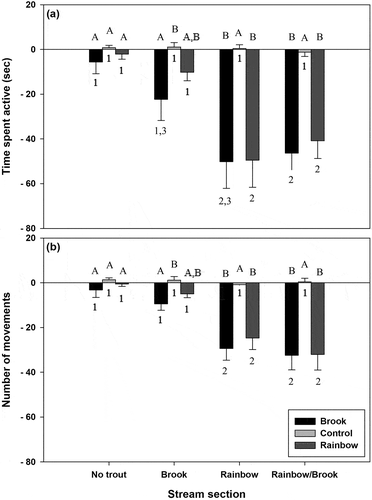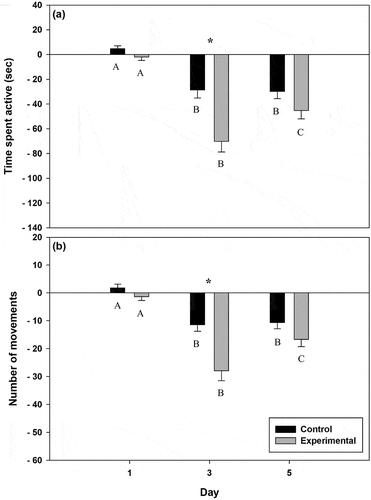Figures & data
Fig. 1. Mean ± SE (a) time spent active (sec) and (b) number of movements for larval D. quadramaculatus from varying trout predator sections. Bars with different letters are significantly different at α = 0.05 within a particular stream reach, while bars with different numbers are significantly different across stream reaches but within a given predator cue treatment.

Fig. 2. Mean ± SE (a) time spent active (sec) and (b) number of movements for larval D. quadramaculatus from a brook trout reach. Black is the control group and grey is the experimental group. Responses not connected by the same letter are significantly different within treatment groups (α = 0.05) and responses separated by an asterisk (*) are significantly different between groups (α = 0.05).

